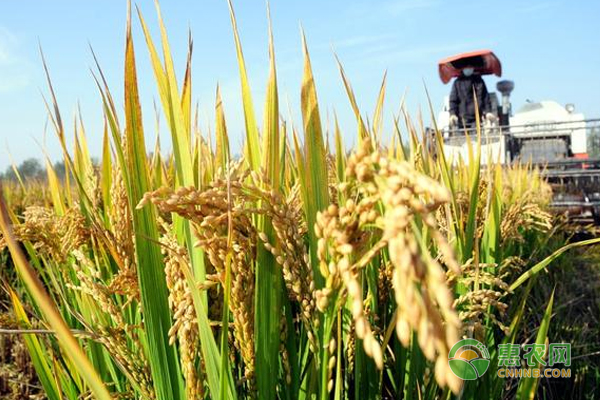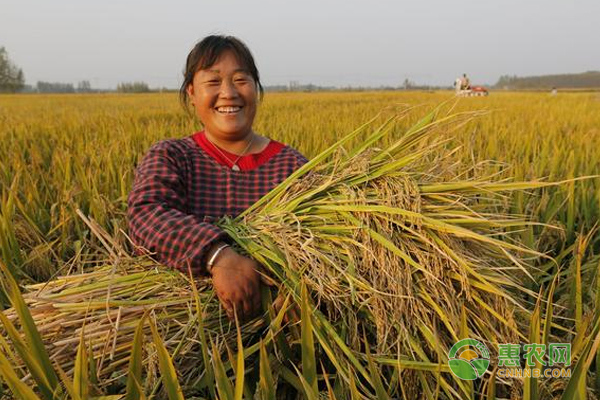As a basic food crop, rice has a wide area of ​​planting in China. It has low requirements for land and is relatively easy to cultivate, so it has a very important position in the agricultural field of China. However, this crop of rice also has certain shortcomings, that is, the yield of 667 m is low, and there are many factors that will have a greater impact on the seedlings. This requires agricultural personnel to plant rice in strict accordance with scientific planting methods and advanced planting techniques. In recent years, relevant data show that although China's rice output is increasing every year, the rate of increase in production is slowing down year by year, which is not good news for China. As we all know, China is a country with a large population, so the demand for food is very high. Once the growth rate of rice production in China has stagnated, there will be a phenomenon that the growth rate of rice production cannot match the growth rate of China's population. The emergence of a phenomenon is very deadly. At the same time, the stagnation of rice production growth in China will also cause large fluctuations in international food prices, which will also have certain impact on other countries. Therefore, how to ensure the increase of rice production through scientific means has become a problem that Chinese agricultural researchers must face.

1 High-yield cultivation techniques for rice
1.1 Scientific selection of rice varieties
For rice, there are many factors that affect its yield. Among them, rice varieties are an important factor in determining whether rice cultivation can achieve high yield. Therefore, when planting rice, the first thing to do is to select the varieties of rice. For rice, the excellentness of its varieties is manifested in many aspects. It is not only the aspect of high yield, but the pest resistance and lodging resistance of rice should be taken into account [1]. At present, with the unremitting efforts of agricultural researchers in China, China has a number of relatively good rice varieties. These varieties have undergone numerous trials and have been improved many times, and their quality has stood the test.
1.2 Improvements in seeding techniques
When sowing rice, it is important to note the impact of planting techniques on rice yield. Before planting, the land must be treated to a certain extent. The main treatment method is to plow the land through mechanical equipment to improve the permeability and water permeability of the land, so as to ensure that the root growth of the rice is not affected. In addition, the timing of the timing of planting is also very important. Since the planting area of ​​rice in China is very wide, and the climatic conditions vary from place to place, it is necessary to formulate a planting plan based on the climatic conditions of each place. At the time of sowing, it is necessary to notice the effect of temperature on rice. Sowing too early will cause frostbite in rice. Therefore, the choice of seeding time is very important.
1.3 Fertilizer application skills
Like other crops, rice is also fertilized. Reasonable fertilization can not only increase the yield of rice, but also increase the pest resistance of rice. However, because the roots of rice are relatively fragile, it is not appropriate to use some chemical fertilizers for rice. Farmers' organic fertilizers should be used. Such fertilizers are mild and do not have much impact on rice roots. When fertilizing, pay attention to the amount of organic fertilizer used, generally 725 kg / 667 m is appropriate [3]. The fertilizer applied at this time is called base fertilizer and plays a decisive role in rice yield. After the application of the fertilizer this time, it does not mean that the fertilization work of the rice is over, and the rice is topdressed. After transplanting, it is necessary to observe the growth of rice. If the rice grows poorly, it is necessary to topdress the rice. According to research by agricultural researchers on experimental fields, it is generally best to perform topdressing within 7 days after rice transplanting. At the time of fertilization and topdressing, it should be noted that when fertilizing, it is necessary to ensure that the land is in the state of being finished, that is, the weeding and irrigation work has been completed.

1.4 Guarantee water for rice growth
After the transplanting, it entered the developmental stage of rice. In the developmental stage, pay special attention to the water requirements of rice. When irrigating rice, it is important to note that the amount of water required for different developmental stages of rice is different. In the early stage of rice development, the roots and stems of rice are relatively fragile, and their ability to adsorb water is not strong. Therefore, it is not appropriate to irrigate rice fields in large quantities to prevent the occurrence of rotten roots in rice. Intermittent irrigation can be chosen, with a small amount of irrigation per rice, but increasing the number of irrigations, which minimizes damage to rice.
1.5 Planting Precautions
For rice, in order to increase production, it is necessary to make necessary observations on seedlings. This is because rice is sensitive to temperature and is affected by temperature, so there are different growth conditions under different temperature conditions. Generally, the higher the outside temperature, the faster the growth of rice: the lower the outside temperature, the slower the growth of rice. In addition, when transplanting rice, it should be noted that not all seedlings are the same depth of transplanting. For the seedlings with soil at the roots, you can insert them shallower; while some of the seedlings have no soil at the roots, they should be inserted a little deeper.

2 Rice pest control
In addition to factors such as variety and planting methods that affect rice yield, another important factor is rice pests and diseases. If this factor is not handled well, it will lead to a large area of ​​rice production. When using chemical agents to spray rice, it is important to note that the drug enters the rice body through the leaf surface of the rice, rather than entering the rice body through the roots of the rice. Therefore, the particles of the drug to be sprayed should be as small as possible to ensure adequate absorption of rice.
2.1 Strengthen pest and disease prevention work
It is very necessary to prevent pests and diseases from rice, because once rice and insects appear in the rice, pests and diseases are often found in large areas. For such large-scale pests and diseases, it is difficult to control, and secondly, even if the pests and diseases are controlled, the cost of planting will be greatly improved. Therefore, it is very necessary to prevent pests and diseases on rice.
2.2 Pest Control Measures
If pests and diseases are still occurring in the prevention of pests and diseases, appropriate prevention and control measures should be taken. In the prevention and control, we must follow the principle of “physical prevention and control, supplemented by chemical prevention and control†[5]. If the physical method is unable to control rice pests and diseases, then consider the chemical method, that is, the method of spraying pesticides on rice.
Since rice occupies a dominant position in China's grain production, a large number of agricultural researchers have conducted in-depth research on rice cultivation. There are both successful practices and failed explorations. In recent years, through continuous exploration and practice, some breakthroughs have been made in the production of 667 m of rice. Agricultural researchers still need to work hard to make China's rice production of 667 m reach the world's top level.
According to Huinong.com, no matter whether it is in the south or in the north, there are people who plant rice. For the sake of the farmers’ own interests, the high-yield rice cultivation and pest control techniques shared by Xiaobian are quick to see!
Lab Microscope,Binocular Biological Lab Microscope,Binoculars Lab Optical Microscope,Laboratory Biological Optical Microscope
NINGBO VANCO INSTRUMENT CO.,LTD , https://www.vancoscope.com